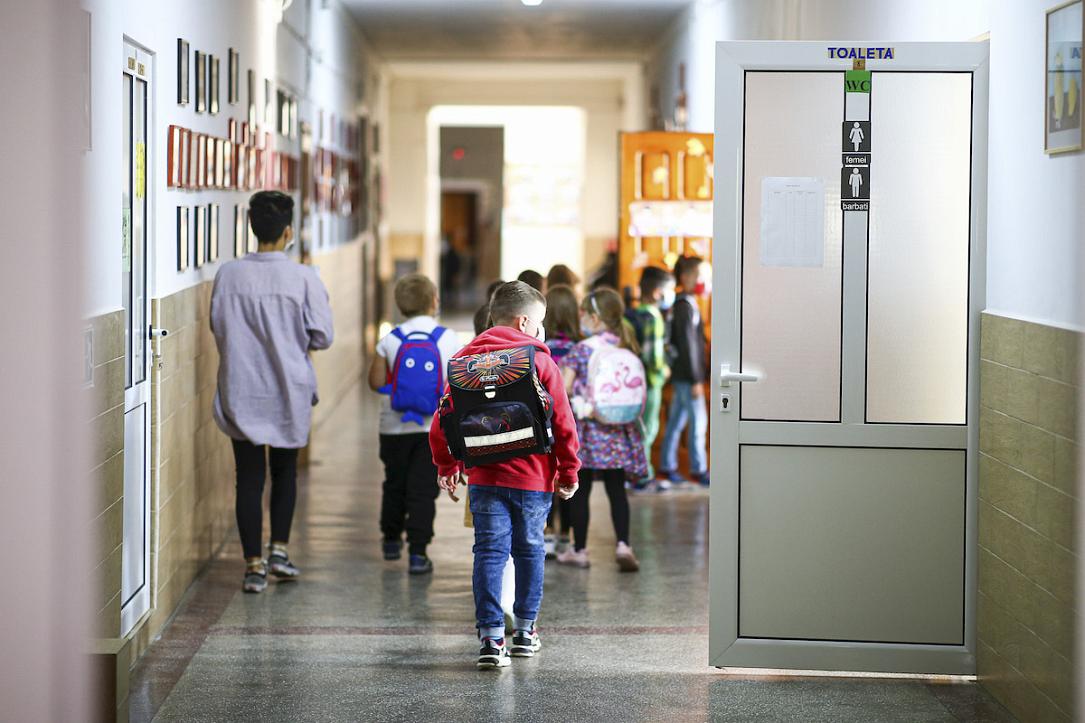World Bank report: Children in Romania will reach only 58% of their productive potential, compared to 75% in Poland

A child born in Romania today will achieve only about half of the productive potential of a fully educated adult in good health, says the latest update of the World Bank’s Human Capital Index (HCI), which measures pre-pandemic human capital outcomes around the world.
The Human Capital Index (HCI), first launched in 2018, measures the level of knowledge and skills that a child born today can expect to acquire by the age 18 based on the risks associated with poor education and health in a specific country.
This year’s report includes a decade-long analysis of human capital development from 2010 to 2020 in 103 countries, including Romania. This analysis shows that a child born in Romania today will achieve 58% of the productive potential of a fully educated adult in optimal health. This is lower than the productivity potential of 60% 10 years ago.
Romania’s score is now lower than most of its regional peers. Among Romania’s neighbors, only Moldova is at the same level, with a productivity potential of 58%. Meanwhile, Bulgaria is at 61%, Ukraine – 63%, Serbia – 68%, and Hungary – 68%.
The regional champions are Estonia, where a child can expect to achieve 78% of the productive potential of a fully educated adult in good health, followed by Slovenia – 77%, Poland and Czechia – 75%.
The highest-ranked country in the world in Singapore, where children will reach 88% of the productive potential of a fully educated adult in good health. At the opposite end is the Central African Republic, with a productivity potential of 29%.
Romania’s HCI value reflects the need for urgent improvements in health and education outcomes. Today, a child in Romania can expect to complete 11.8 years of pre-primary, primary and secondary school by age 18, compared with 12.6 years in 2010. By comparison, a child in Poland can expect to complete 13.4 years. When years of schooling are adjusted for the quality of learning, the World Bank estimates that a child in Romania only benefits from 8.4 years of schooling, compared to 11.4 years in Poland.
Furthermore, students in Romania score 442 for learning outcomes on a scale where 625 represents advanced attainment and 300 represents minimum attainment. For comparison, students in Poland score 530. In terms of health, the percentage of 15-year-olds that will survive to age 60 stands at only 88 percent.
“Once again, the Human Capital Index draws attention to the fact that Romania needs to urgently invest in the health and education of its children. The World Bank is committed to assist Romanian authorities in their efforts to invest more and invest smarter in human capital, to accelerate progress towards a world in which all children can expect to receive quality learning in the classroom or online, and are able to enter the job market as healthy, skilled, and productive adults,” said Tatiana Proskuryakova, World Bank Country Manager for Romania and Hungary.
The HCI is made up of six indicators: the probability of survival to age 5, a child’s expected years of schooling, harmonized test scores, learning-adjusted years of school, adult survival rate, and healthy growth - the proportion of children who are not stunted (data on stunting are not available for Romania). Scores are compiled for 174 countries covering 98 percent of the world’s population up to March 2020, providing a pre-pandemic baseline on the health and education of children.
The full report is available here.
editor@romania-insider.com
(Photo source: Inquam Photos / Virgil Simionescu)
















